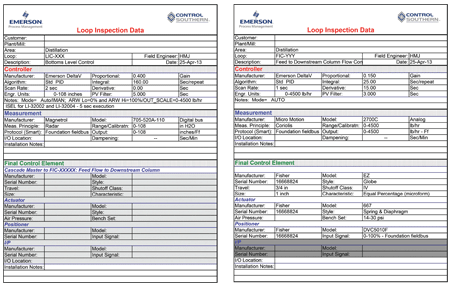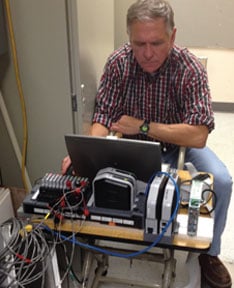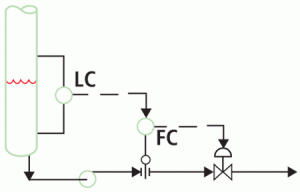This post was authored by Harley Jeffery, who has worked in the field of industrial process control for more than 40 years. He is the author of the ISA book, Loop Checking: A Technician’s Guide.
Controlling distillation columns is a tough assignment due to the interacting nature of the process and the upstream/downstream effects of loop tuning. In this example, the column bottoms level control had stability problems (cycling), causing manual operation and the operators’ constant attention.
The bottoms level needed to be controlled to a set point that minimized the time the liquid sat in the receiver for quality purposes. However, it had to maintain a fairly tight range to prevent flooding the bottom tray on the range upper end and to maintain sufficient pump suction head for the bottoms pump out for the lower constraint.
The bottoms level needed to be controlled to a set point that minimized the time the liquid sat in the receiver for quality purposes. However, it had to maintain a fairly tight range to prevent flooding the bottom tray on the range upper end and to maintain sufficient pump suction head for the bottoms pump out for the lower constraint.
Previous loop tuning had resulted in excessive movements to the bottoms flow that adversely loaded the downstream column. Thus, the operators ran the level-to-flow cascade control loops in manual and constantly manipulated the outflow to maintain the bottoms level within the desired range. Of course, as other matters required operator attention, the bottoms level would drift. When the operator intervened for the required correction, the resultant upset of the columns affected production rate and quality.
Discussions with operating personnel revealed that they typically let the level float within a “comfort” range, because the process would fluctuate but not to the point of concern. If it looked like an up or down trend was developing, then a small bump was made to the outlet flow, and they waited for correction. If the deviation from set point became greater, then larger bumps to the outflow were performed, and they again waited for correction. When asked to place the level/flow in cascade operating mode, the level loop would typically overcorrect and begin to cycle. The outlet flow loop was considered to be working well even though it was manipulated in manual.
The operators had learned from experience what appeared to be a nonlinear gain control strategy. Trusting their judgment, we then proceeded to verify the basics before implementing the strategy.
Basics: Loop tuning and performance
Plant walk through
The first step for loop performance benchmarking is walking through the process to investigate the type and installation of the process measurement and final control elements. Then, returning to the control room, we recorded the distributed control system (DCS) control strategy and tuning. The loop inspection data forms were used to document the as-found control. The measurements were selected with the latest technologies and appeared to be installed with good practices. The control valves were a high-performance design and offered no constraints to push loop response if needed. The as-found tuning parameters were questionable and therefore confirmed our process of “verifying” base-level loop performance.
 Figure 1. Loop inspection data forms
Figure 1. Loop inspection data forms
The DCS configuration application was traced to verify a typical level-to-flow cascade strategy. The DCS also has several built-in cascade application enhancements that we activated.
Designing and testing
Verifying performance begins with designing the loop tests, which include gathering time series data of the process measurements to analyze the overall process trends, statistics for variability, and response to upsets. Then we perform individual loop bump tests to gain process dynamic data and valve performance. We elected to use the EnTech Toolkit to collect, analyze, and help tune the control loops. However, this plant uses Foundation Fieldbus, which communicates digitally to the DCS. The toolkit requires a voltage signal for the process inputs. A recently added feature of the DCS uses characterizable I/O modules, so they were employed to read the process variables over the DCS communications structure and reproduce the values on analog output (AO) modules. The toolkit was then connected to these AOs and successfully able to collect pertinent process data from the DCS.
 Figure 3. Collecting analog data from Foundation fieldbus devices
Figure 3. Collecting analog data from Foundation fieldbus devices
About the Author
Harley Jeffery has worked in the field of industrial process control for more than 40 years, starting with Fisher Controls as a valve application engineer. He has been a control systems engineer and engineering manager with Control Southern for the past 34 years. His experience includes design, implementation, testing, startup, and ongoing improvement of DCSs. Jeffery received a BSIE from Louisiana State University.
A version of this article also was published at InTech magazine.




